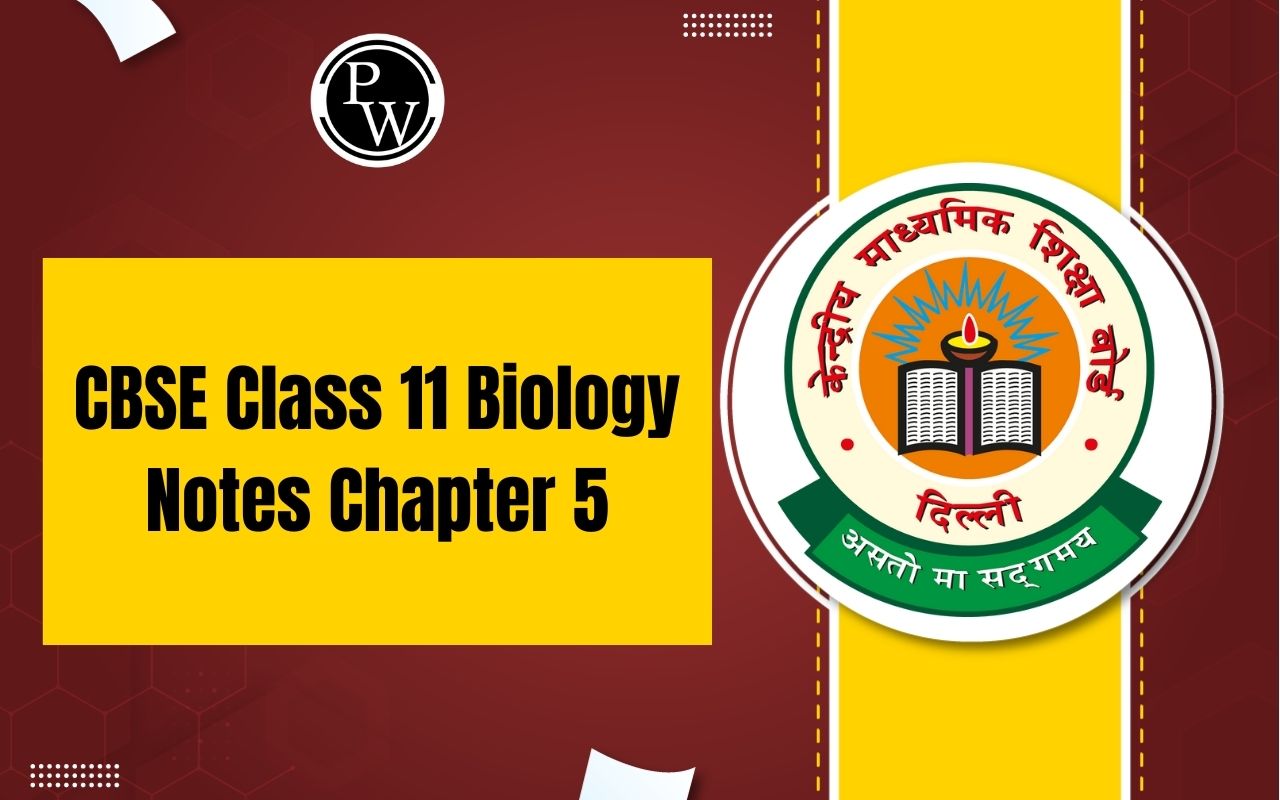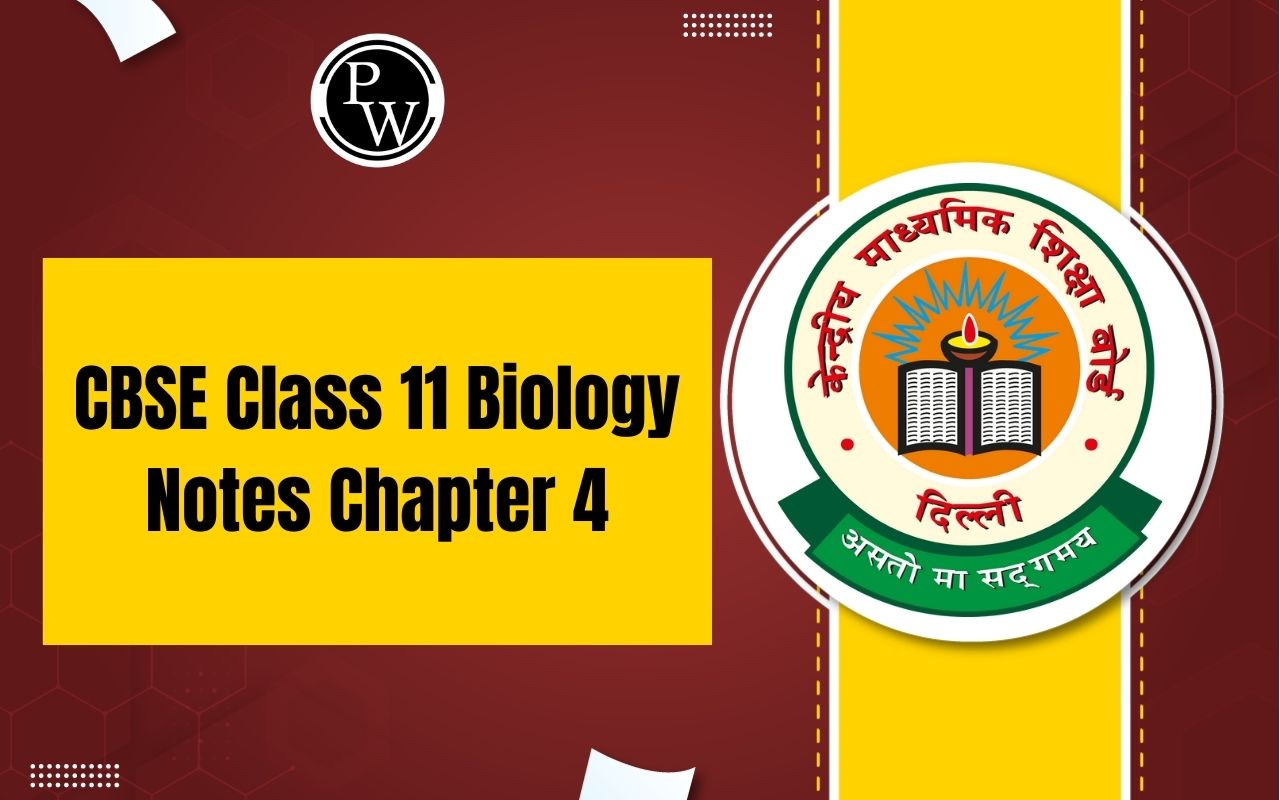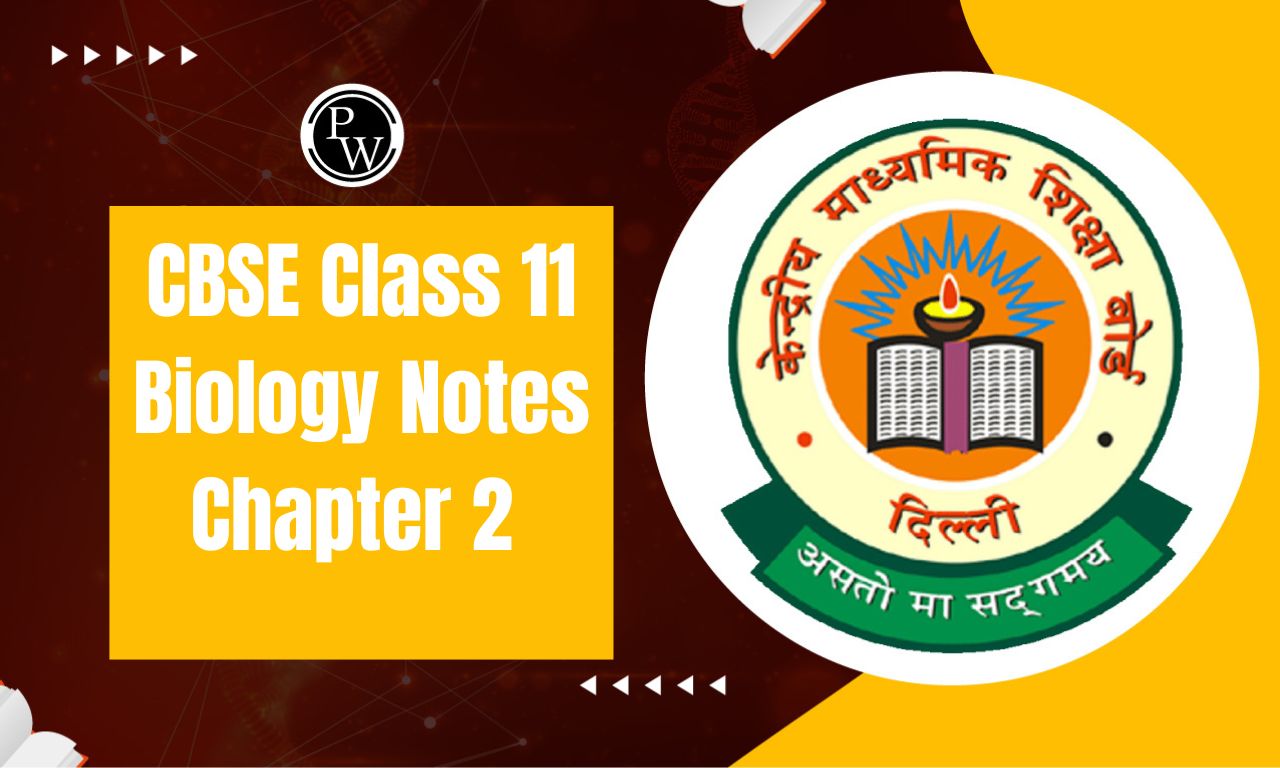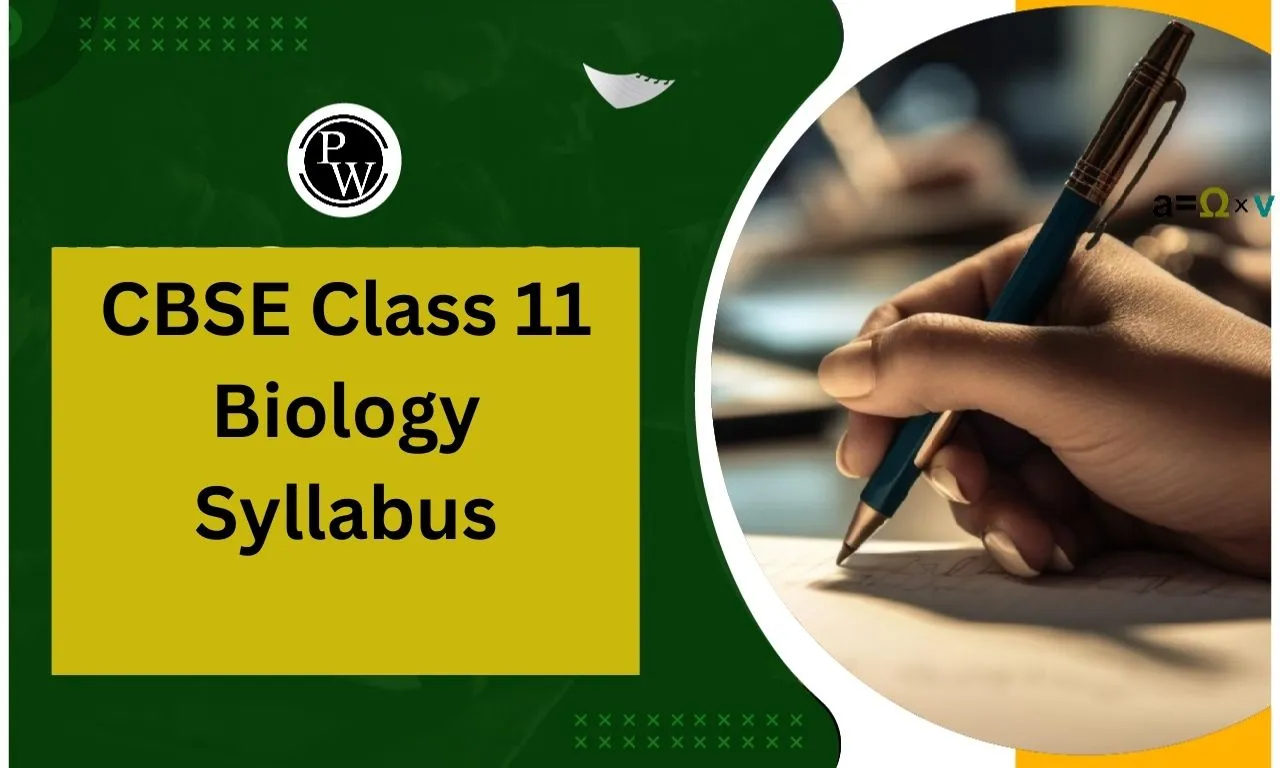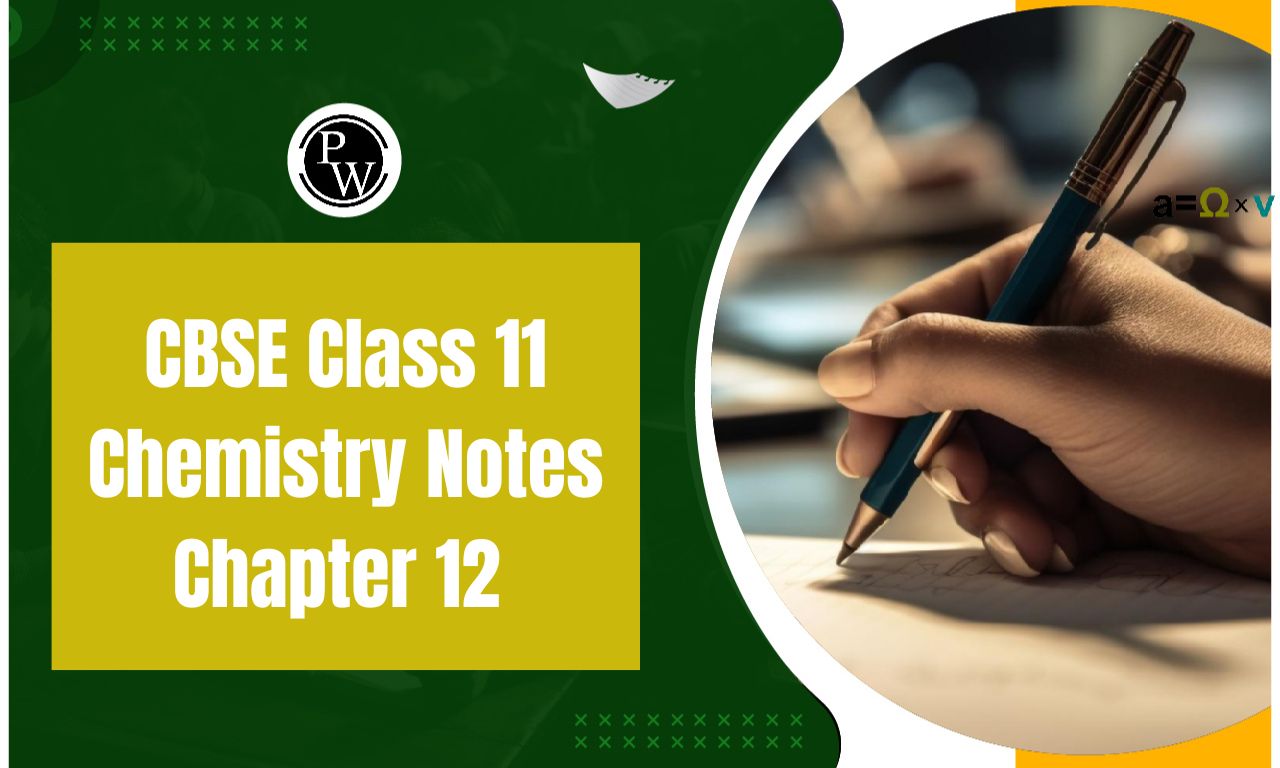
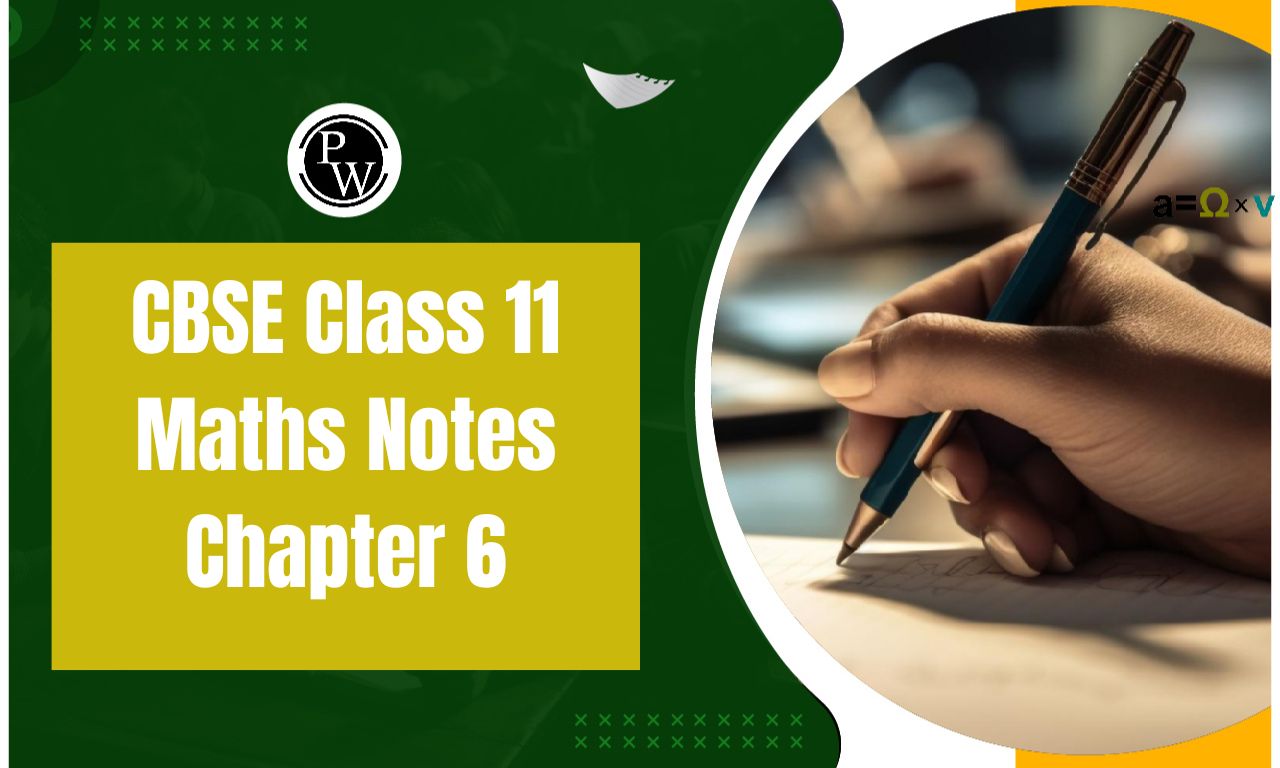
CBSE Class 11 Maths Notes Chapter 6: Class 11 Linear Inequalities Revision Guide Given that CBSE updates the course annually, Chapter 6's orderly organization aids students in clearing up any confusion they may have about the material covered in the course. Notes from the Class 11 Review The concepts and formulas in Chapter 6 are included. All of the key formulas are included in the formula list, which makes it simple for students to review and edit the chapter. The linear inequality revision notes for class 11 that we have provided on this website in PDF format will undoubtedly help you prepare for your exams.
CBSE Class 11 Maths Notes Chapter 6 Overview
An inequality is the relationship between two algebraic expressions or real numbers denoted by the symbols ">," "<," "≥," or "≤." Inequalities include the following statements: 4x + 2y ≤ 20, 9x + 2y ≤ 720, and 9x + 8y ≤ 70. Numerical inequality examples are as follows: 4 < 6; 8 > 6. Examples of literal inequality are x < 6; y > 3; x ≥ 4, y ≤ 5. Double inequalities include 4 < 6 < 8, 4 < x < 6, and 3 < y < 5.CBSE Class 11 Maths Notes Chapter 6 PDF
Here we have provided CBSE Class 11 Maths Notes Chapter 6 for the students to help them in easy preparation. Students can use these notes for a better understanding of the chapter. These notes are created to help students understand the concepts shortly and crisply. Students can use these notes before examinations to revise everything present in the chapter.CBSE Class 11 Maths Notes Chapter 6 PDF
CBSE Class 11 Maths Notes Chapter 6
The equal numbers can have both sides of an inequality added to or subtracted from them. On both sides of an inequality, the same positive number can be multiplied or divided. Inequality, however, reverses when a negative number is multiplied or divided by both sides.Solution of an Inequality
The value of x that causes an inequality to be true is referred to as the inequality's solution. Put a circle around the number and highlight it darkly to the right (or left) of the number a to indicate x > a (or x a) on a number line. On a number line, we must draw a dark circle around the number and outline it with a dark line to the right (or left) of the number x to indicate x an or x a. The points on the line are also included in the answers to the inequality if it has the symbol or. Furthermore, the inequality graph is positioned to the right (above) or left (below) of the equality graph, which is represented by a black line that satisfies an arbitrary point in that section. The points on the line are not included in the solutions to the inequality if they contains a or > symbol. The graph of the inequality in this instance is indicated by a dotted line that satisfies an arbitrary point in the graph of the simultaneous equality, and it lies to the left (below) or right (above) of that graph. When we are unsure about the denominator's sign—it could be +ve or -ve—we must multiply by the denominator's square to eliminate the denominator. Recall that the denominator's square is always positive. Furthermore, multiplying an equation by a positive number does not alter the inequality's sign.
Example of Inequality in Daily Life
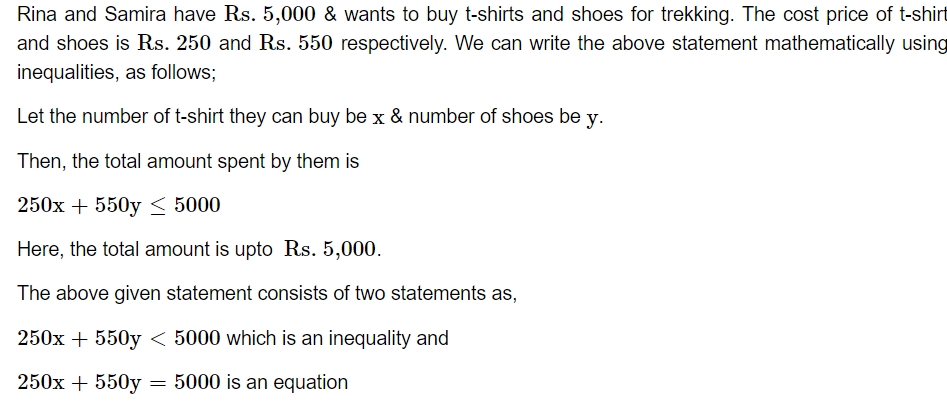
Notations
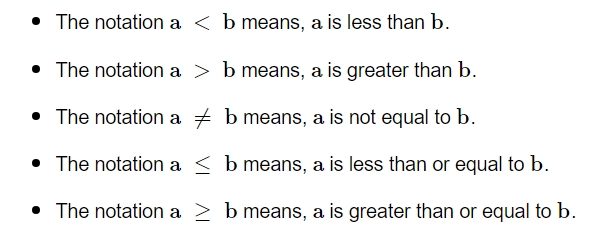
Types of Inequalities:
-
Numerical Inequalities:
Relationship between numbers.
For example,
-
Literal or Variable Inequalities:
Relationship between variables or between a variable and a number.
Example,
-
Double Inequalities:
Relationship from two sides.
For example,
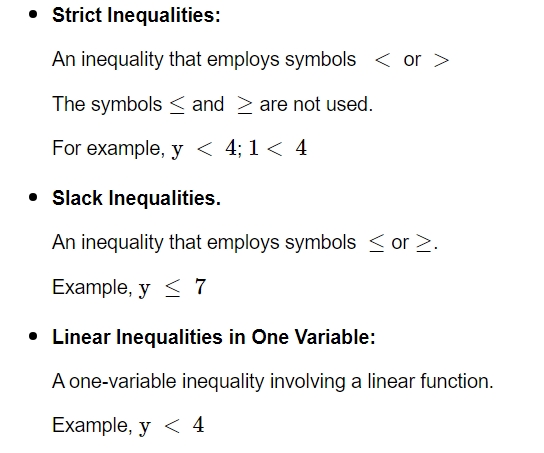
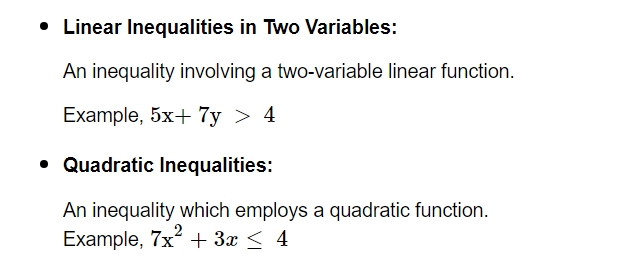
Solution & Solution Set
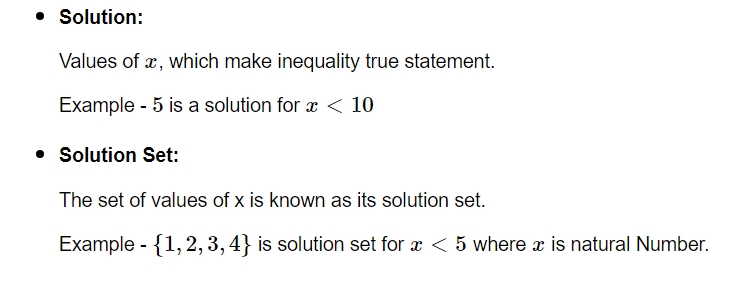
Rules of Inequality
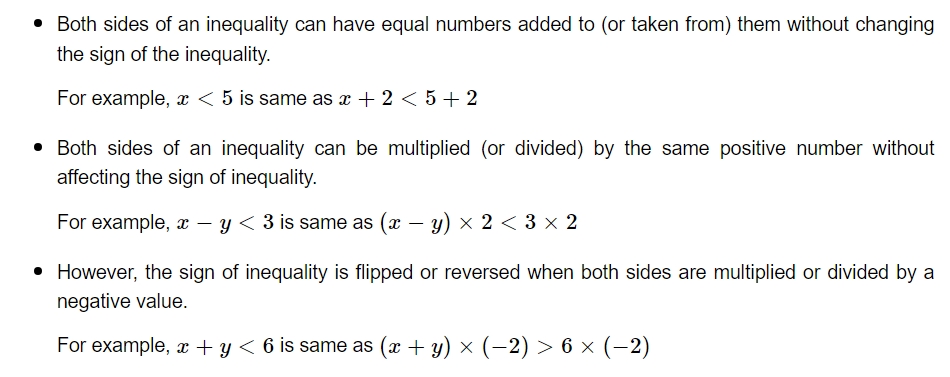
Graphical Solution of Linear Inequalities in 2 Variables
A line splits the Cartesian plane into two equal parts. Every element is called a half-plane. The plane is divided into lower and upper half planes by a non-vertical line and left and right half planes by a vertical line. A point in the Cartesian plane will lie in one of the half-planes or on a line. The region in which every answer to an inequality may be found is known as the solution zone.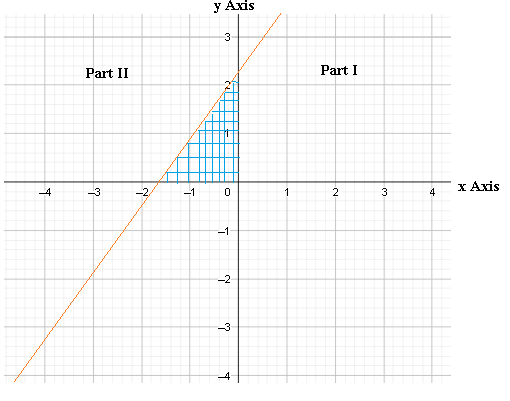 Simply select any non-online point (a, b) and determine if it satisfies the inequality to determine the half-plane that the inequality represents. Should it occur, the inequality symbolizes the half plane and casts a shadow over the area containing the point; if not, the inequality denotes the half plane devoid of the point. The preferred point is (0,0) for convenience.
Simply select any non-online point (a, b) and determine if it satisfies the inequality to determine the half-plane that the inequality represents. Should it occur, the inequality symbolizes the half plane and casts a shadow over the area containing the point; if not, the inequality denotes the half plane devoid of the point. The preferred point is (0,0) for convenience.
There are certain types of linear Inequalities which are as follows:-
-
Linear Inequalities in One Variable
An inequality that takes into account a linear function in one variable is called a linear inequality in one variable. E.g. y < 5;
-
Linear inequalities in two variables
An inequality that typically includes a linear function in two variables is called a linear inequality in two variables. For E.g. 2x + 3y < 5
-
Quadratic inequalities
An inequality that takes into account a quadratic function is called a linear inequality in quadratic. E.g. y3 + 3y ≤ 5
Benefits of CBSE Class 11 Maths Notes Chapter 6
Making last-minute arrangements is never simple. All chapter's main ideas are condensed into an understandable way in our maths notes. Before taking their final exams, students can use these notes to gain an advantage and increase their confidence. Frequent review of all the key ideas and equations is far more beneficial than studying late the night before an exam. The greatest method to solidify your thoughts is to revise sometimes, especially if you're studying maths.CBSE Class 11 Maths Notes Chapter 6 FAQs
Which is the hardest chapter in maths class 11 CBSE?
Which is the most scoring chapter in class 11 maths?
What are the rules for linear inequalities Class 11?




